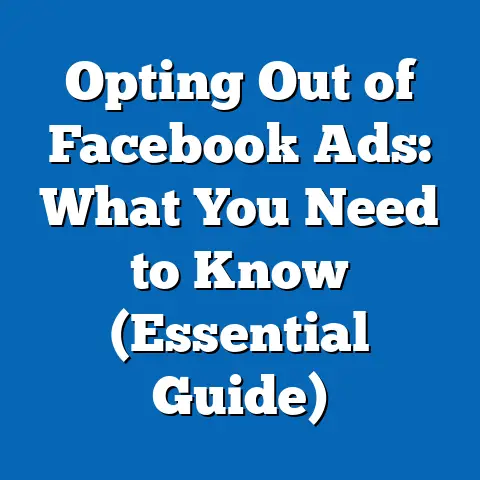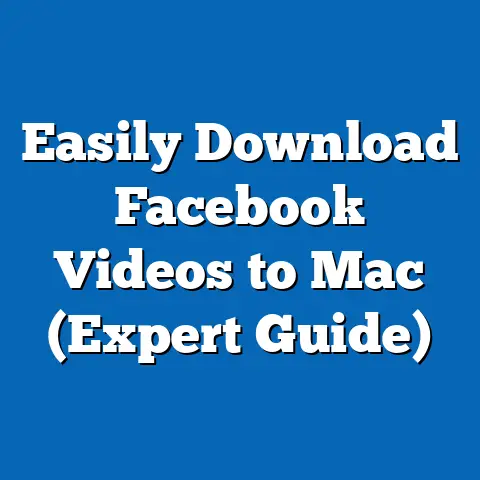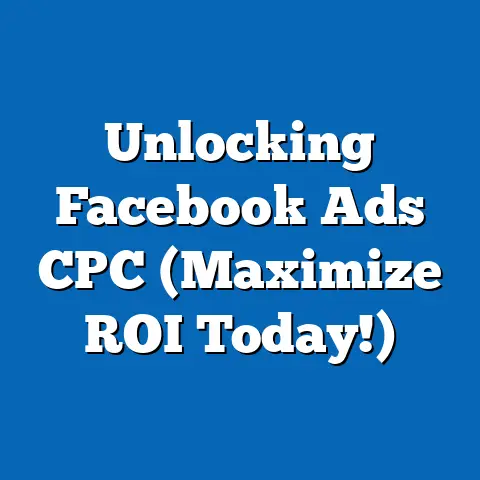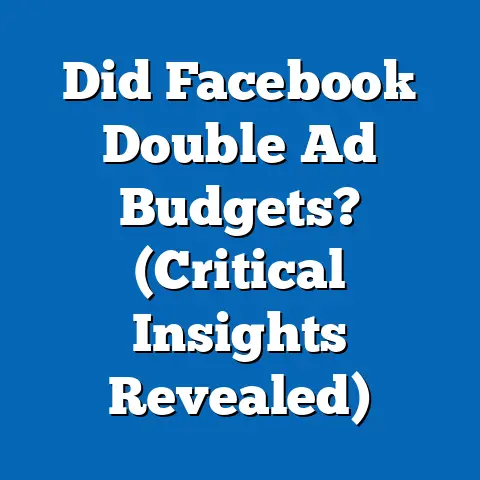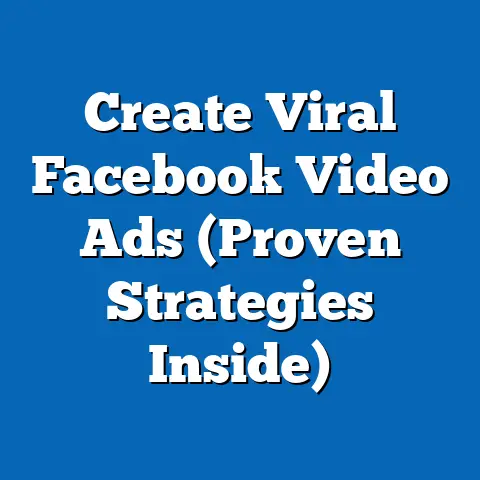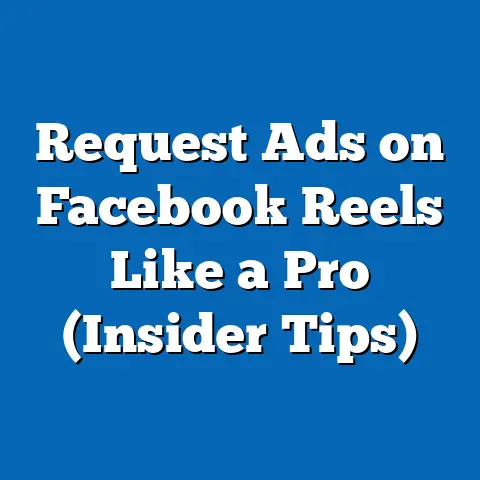Unlock Winning Facebook Product Ads (Proven Strategies)
In the ever-evolving world of digital marketing, it’s easy to get caught up in the latest trends and algorithm updates. However, I’ve learned over the years that certain core principles of advertising remain timeless. Understanding your audience, crafting compelling visuals, and leveraging data analytics are just as important today as they were years ago. When it comes to Facebook product ads, these principles are the foundation for success. Despite the constant changes on the platform, these proven strategies have consistently delivered winning results, and I’m excited to share them with you.
Understanding Your Audience
One of the biggest mistakes I see businesses make with their Facebook product ads is failing to truly understand their audience. You can have the most beautiful product photos and the wittiest ad copy, but if you’re showing it to the wrong people, it’s all for naught. Audience research is paramount. Think of it as laying the groundwork for a successful campaign.
One of the most powerful tools Facebook offers for this is Audience Insights. It’s a goldmine of demographic data, interests, behaviors, and even purchasing patterns of people on Facebook. I often start here when planning a new campaign.
Here’s how I use it:
-
Start Broad: I begin by selecting a broad audience based on my initial assumptions about my target market. For example, if I’m selling eco-friendly baby products, I might start with people interested in “parenting,” “organic baby food,” or “sustainable living.”
-
Dig Deeper: Once I have a broad audience, I use Audience Insights to uncover more specific interests and behaviors. I look at things like:
- Demographics: Age, gender, location, education level, and relationship status.
- Interests: Pages they like, topics they engage with, and activities they enjoy.
- Behaviors: Purchasing habits, device usage, and travel patterns.
-
Segment, Segment, Segment: This is where the magic happens. Based on the data I gather, I segment my audience into smaller, more targeted groups. For example, I might create segments for:
- First-time parents: Interested in baby products and parenting advice.
- Eco-conscious parents: Interested in organic food, sustainable products, and environmental issues.
- Luxury-seeking parents: Interested in high-end baby gear and designer brands.
Start Broad: I begin by selecting a broad audience based on my initial assumptions about my target market. For example, if I’m selling eco-friendly baby products, I might start with people interested in “parenting,” “organic baby food,” or “sustainable living.”
Dig Deeper: Once I have a broad audience, I use Audience Insights to uncover more specific interests and behaviors. I look at things like:
- Demographics: Age, gender, location, education level, and relationship status.
- Interests: Pages they like, topics they engage with, and activities they enjoy.
- Behaviors: Purchasing habits, device usage, and travel patterns.
Segment, Segment, Segment: This is where the magic happens. Based on the data I gather, I segment my audience into smaller, more targeted groups. For example, I might create segments for:
- First-time parents: Interested in baby products and parenting advice.
- Eco-conscious parents: Interested in organic food, sustainable products, and environmental issues.
- Luxury-seeking parents: Interested in high-end baby gear and designer brands.
By segmenting your audience, you can tailor your ads to resonate with each group’s specific needs and interests. I once worked with a client who sold handmade leather journals. Initially, they were targeting a broad audience interested in “writing.” After using Audience Insights, we discovered that their ideal customers were also interested in “travel,” “calligraphy,” and “vintage aesthetics.” We created separate ad campaigns targeting these specific segments, and their engagement and sales skyrocketed.
Key Takeaway: Don’t rely on assumptions about your target audience. Use Facebook’s Audience Insights tool to gather data and segment your audience into smaller, more targeted groups. This will allow you to create ads that are more relevant and engaging, leading to higher conversion rates.
Crafting Compelling Ad Copy
Once you’ve identified your target audience, the next step is to create ad copy that grabs their attention and persuades them to click. This is where the art of copywriting comes into play. High-converting ad copy has a few key elements:
- Clear Messaging: Your ad copy should clearly communicate the benefits of your product and why your audience should care. Avoid jargon and focus on the value you’re offering.
- Urgency: Creating a sense of urgency can encourage people to take action immediately. Use phrases like “Limited Time Offer,” “Sale Ends Soon,” or “While Supplies Last.”
- Emotional Appeal: People are more likely to buy when they feel an emotional connection to your product or brand. Use storytelling, testimonials, or evocative language to tap into their emotions.
- Strong Call-to-Action (CTA): Your CTA should tell people exactly what you want them to do. Use clear and concise language like “Shop Now,” “Learn More,” “Get Started,” or “Download Now.”
I’ve found that the CTA is often the most overlooked part of ad copy, but it’s arguably the most important. After all, what’s the point of running an ad if you don’t tell people what to do next?
A/B Testing is Your Friend: Don’t just guess what ad copy will resonate with your audience. Use A/B testing to experiment with different headlines, descriptions, and CTAs. Facebook allows you to easily create multiple versions of your ad and track their performance. I typically test at least two or three variations of my ad copy before launching a full-scale campaign.
Example: Let’s say you’re selling a new type of yoga mat. Here are a few different ad copy variations you could test:
- Variation 1: “Experience the ultimate in comfort and support with our new yoga mat. Shop Now and get 20% off!”
- Variation 2: “Transform your yoga practice with our eco-friendly, non-slip mat. Feel grounded and centered with every pose. Learn More.”
- Variation 3: “Limited Time Offer! Get our premium yoga mat for just \$49.99. Sale Ends Sunday. Shop Now!”
By testing these different variations, you can see which headline, description, and CTA perform best with your target audience.
Key Takeaway: Craft compelling ad copy that clearly communicates the benefits of your product, creates a sense of urgency, appeals to emotions, and includes a strong call-to-action. Use A/B testing to experiment with different variations and optimize your copy for maximum impact.
Visual Elements That Capture Attention
In the visually-driven world of Facebook, your ad’s visual elements are often the first thing people notice. High-quality images and videos are essential for capturing attention and making a positive impression.
- High-Quality is Non-Negotiable: Blurry, pixelated, or poorly lit images will instantly turn people off. Invest in professional photography or videography, or learn how to take great photos yourself.
- Branding is Key: Your visual elements should be consistent with your brand’s aesthetic. Use your brand colors, fonts, and logo to create a cohesive and recognizable look.
- Show, Don’t Just Tell: Instead of just showing a static image of your product, try to showcase it in action. For example, if you’re selling a backpack, show someone wearing it while hiking or traveling.
- Video is King: Video ads tend to perform better than static image ads because they’re more engaging and can convey more information in a shorter amount of time. Experiment with different types of video ads, such as product demos, customer testimonials, or behind-the-scenes footage.
I once worked with a clothing boutique that was struggling to get traction with their Facebook ads. Their images were low-quality and didn’t showcase their clothing in a flattering way. We invested in professional photoshoots that highlighted the unique style and quality of their clothing, and their engagement and sales increased dramatically.
Tips for Creating Eye-Catching Graphics and Videos:
- Use Bright Colors: Bright colors tend to stand out more in the Facebook newsfeed.
- Add Text Overlays: Use text overlays to highlight key benefits or features of your product.
- Use Motion Graphics: Motion graphics can add visual interest and make your ads more engaging.
- Keep it Short and Sweet: People have short attention spans, so keep your videos concise and to the point.
Key Takeaway: Invest in high-quality visual elements that are consistent with your brand’s aesthetic. Showcase your product in action and experiment with different types of video ads.
Leveraging Facebook Ad Formats
Facebook offers a variety of ad formats, each with its own unique benefits. Choosing the right ad format for your campaign goals and audience preferences is crucial for success. Here’s a breakdown of some of the most popular ad formats:
- Image Ads: Simple and straightforward, image ads are a great way to showcase your product with a single image and compelling ad copy.
- Video Ads: As mentioned earlier, video ads are highly engaging and can convey more information in a shorter amount of time.
- Carousel Ads: Carousel ads allow you to showcase multiple products or features in a single ad. Users can swipe through the carousel to see each item.
- Collection Ads: Collection ads are designed for e-commerce businesses. They feature a cover image or video, followed by a grid of product images. When users click on a product, they’re taken directly to the product page on your website.
- Lead Generation Ads: Lead generation ads allow you to collect leads directly on Facebook. Users can fill out a form with their contact information without leaving the platform.
Choosing the Right Ad Format:
- Campaign Goals: What are you trying to achieve with your ad campaign? If you’re trying to drive traffic to your website, image ads or video ads might be a good choice. If you’re trying to generate leads, lead generation ads are a better option.
- Audience Preferences: What type of content does your audience engage with most? If they love watching videos, video ads are a great choice. If they prefer browsing through multiple products, carousel ads might be a better option.
- Product Type: What type of product are you advertising? If you’re selling a single product, image ads or video ads might be sufficient. If you’re selling a range of products, carousel ads or collection ads might be more effective.
I’ve found that carousel ads are particularly effective for e-commerce businesses because they allow you to showcase multiple products in a single ad. This can increase engagement and drive more traffic to your website.
Key Takeaway: Experiment with different Facebook ad formats to find the ones that work best for your campaign goals and audience preferences. Consider your product type and what kind of message you want to convey.
Analyzing Performance and Making Data-Driven Decisions
Running Facebook ads is not a “set it and forget it” kind of thing. It requires ongoing monitoring and optimization. You need to constantly analyze your ad performance and make data-driven decisions to improve your results.
Facebook Ads Manager is Your Best Friend: Facebook Ads Manager is a powerful tool that allows you to track the performance of your ad campaigns in real-time. You can see metrics like:
- Impressions: The number of times your ad was shown.
- Reach: The number of unique people who saw your ad.
- Clicks: The number of times people clicked on your ad.
- Click-Through Rate (CTR): The percentage of people who saw your ad and clicked on it.
- Conversions: The number of people who took a desired action, such as making a purchase or filling out a form.
- Conversion Rate: The percentage of people who clicked on your ad and completed a conversion.
- Return on Ad Spend (ROAS): The amount of revenue you generated for every dollar you spent on advertising.
Key Performance Indicators (KPIs): Which KPIs should you focus on? It depends on your campaign goals. If you’re trying to drive traffic to your website, CTR is a key metric to track. If you’re trying to generate leads, conversion rate is more important. And if you’re trying to generate sales, ROAS is the ultimate measure of success.
Interpreting the Data: Once you have data, what do you do with it? Look for trends and patterns. Are certain ads performing better than others? Are certain audiences more responsive to your ads?
- Adjust Targeting: If your ads aren’t reaching the right people, adjust your targeting criteria. Try experimenting with different interests, behaviors, or demographics.
- Budget Allocation: If certain ads are performing well, allocate more of your budget to those ads. Conversely, if certain ads are underperforming, reduce their budget or pause them altogether.
- Creative Elements: If your ad copy or visual elements aren’t resonating with your audience, try experimenting with different variations.
Example: Let’s say you’re running two different ad campaigns, one targeting a broad audience and one targeting a more specific audience. You notice that the specific audience campaign has a higher CTR and conversion rate. This indicates that your specific audience is more responsive to your ads. You should allocate more of your budget to the specific audience campaign and consider further refining your targeting criteria.
Key Takeaway: Monitor your ad performance using Facebook Ads Manager and track key performance indicators. Interpret the data to inform future ad campaigns, including adjusting targeting, budget allocation, and creative elements.
Retargeting Strategies That Work
Retargeting is one of the most powerful strategies in digital marketing. It involves showing ads to people who have previously engaged with your brand, such as visiting your website, viewing a product, or adding an item to their cart.
Why is Retargeting So Effective? Because these people have already shown an interest in your products or services. They’re more likely to convert than people who have never heard of your brand before.
Setting Up Retargeting Campaigns:
- Install Facebook Pixel: The Facebook Pixel is a piece of code that you install on your website. It allows Facebook to track the actions that people take on your website, such as visiting a page, adding an item to their cart, or making a purchase.
- Create Custom Audiences: Once you have the Facebook Pixel installed, you can create custom audiences based on the actions that people take on your website. For example, you can create an audience of people who visited your website in the past 30 days, or people who added an item to their cart but didn’t complete the purchase.
- Create Retargeting Ads: Now you can create ads that are specifically targeted to these custom audiences. For example, you can show ads to people who added an item to their cart but didn’t complete the purchase, reminding them to complete their order.
Successful Retargeting Strategies:
- Abandoned Cart Recovery: Show ads to people who added an item to their cart but didn’t complete the purchase, offering them a discount or free shipping to incentivize them to complete their order.
- Product Upselling: Show ads to people who recently purchased a product, recommending related products that they might be interested in.
- Customer Loyalty: Show ads to existing customers, thanking them for their business and offering them exclusive deals or promotions.
I’ve seen retargeting campaigns lead to significant improvements in sales and customer loyalty. It’s a cost-effective way to reach people who are already interested in your brand and encourage them to take action.
Key Takeaway: Set up retargeting campaigns using Facebook Pixel and custom audiences. Show ads to people who have previously engaged with your brand, offering them incentives to complete their purchase or take other desired actions.
Conclusion
While the world of Facebook advertising may seem complex and ever-changing, the core principles of success remain timeless. Understanding your audience, crafting compelling content, leveraging visual elements, choosing the right ad formats, analyzing performance, and implementing effective retargeting strategies are all essential for unlocking the full potential of your Facebook product ads.
By implementing these proven strategies, you can drive successful marketing outcomes, increase sales, and build lasting relationships with your customers. So, take these insights, apply them to your campaigns, and watch your Facebook product ads soar to new heights.

